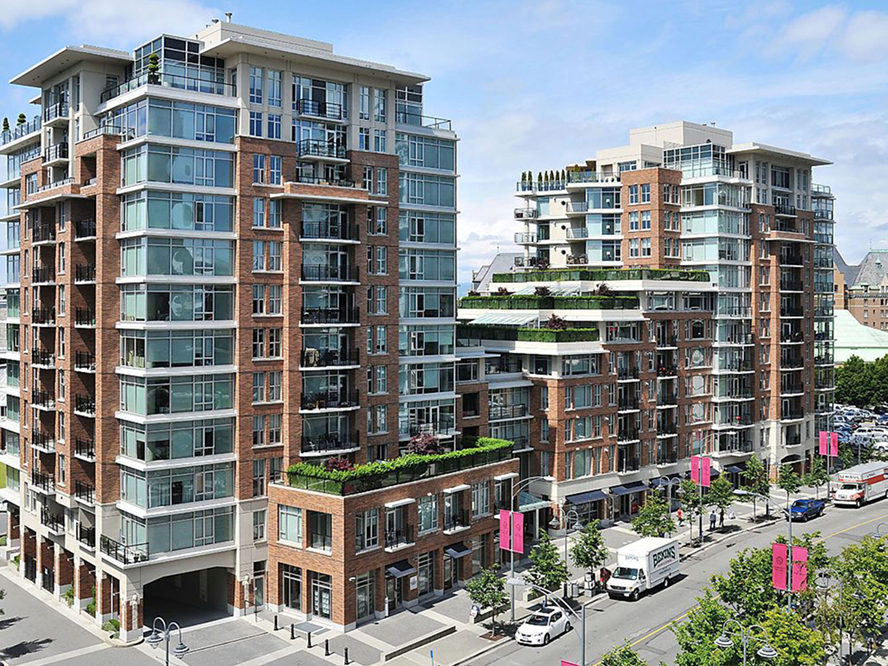Kitimat:
This northwest British Columbia centre is ground zero for the biggest private investment in Canadian history: LNG Canada’s $40 million liquefied natural gas terminus and pipeline network that will change Kitimat forever.
It will also likely improve the fortunes of real estate investors quick enough to get into town. Despite work camps springing up to house the estimated 6,000 construction workers, the real estate play in Kitimat is residential rentals. A lot of management types, consultants, government officials and other professionals will be seeking two-to-three-year rentals in Kitimat, figures Jason Pender of JV Development Group. His company is in joint venture rushing to complete a 27-acre project with 94 townhomes and more than 30 detached house lots.
For smaller rental investors, the best play could be older fourplexes in town. Four spruced-up rental units could churn up to $4,000 per month or more by next year.
Victoria:
Victoria’s multi-family market is poised to entice landlords for the foreseeable future. Canada Mortgage and Housing Corp. forecasts the region’s 0.7 per cent vacancy rate to remain tight throughout 2018.
More than 2,000 rental units are currently under construction and are expected to hit the market this year, with more than 5,000 in the pipeline or development process. New supply is expected to edge up vacancy rates only moderately, however.
Nearby Langford is having its own rental-housing boom, according to developer DB Services of Victoria. Rental housing projects in Langford are lined up for the next five years, many tied to investor ownership.
Average rents in Greater Victoria are around $1,000 for one-bedroom suites and close to $1,300 per month for two-bedroom apartments.
Rental demand is expected to increase with the ongoing influx of young tech professionals moving to Victoria, pushing its unemployment rate below the national average of 5.8 per cent. Employment in the city is bolstered by three major post-secondary institutions – the University of Victoria, Royal Roads University and Camosun College – and provincial government and other public- sector employment.
Okotoks:
Okotoks is one of the fastest-growing cities in Alberta, with a population of 28,881. Just 15 minutes south of Calgary, Okotoks posted a growth rate of 17.8 per cent from 2011 to 2016, and a whopping 43 per cent from 2006 to 2011, emerging as an in-demand destination for commuters.
The city’s residents average age is 34, making it a popular choice among millennials. Rental demand in the city is at a record high, with vacancy dropping to 0 per cent for one-bedrooms, according to Canada Mortgage and Housing Corp. and the average rent increasing 4.5 per cent from a year earlier. The federal agency notes that Okotoks has only 115 purpose-built rental apartments in its entire inventory, which would imply an opportunity for multi-family developers.
The city has one Alberta’s highest median family incomes, with a year-over-year increase of 5.16 per cent. Okotoks benchmark home price is around $435,00, $100,000 higher than the Foothills region’s benchmark price. This is another reason why rental demand will remain high in an extremely tight market.
Winnipeg:
Multi-family investing in Manitoba is led by Winnipeg, the capital city and home to about 70 per cent of the provincial population.
The average residential-detached sales price is around $323,001, a 2 per cent increase over the same period a year ago. The condominium average sales price of $239,349 is up by the same amount, but it is possible to buy rental condos for less than $100,000.
Stability characterizes the rental sector.
The rental vacancy is forecast to be unchanged at 3.2 per cent this year – the lowest among major Prairie cities – with the average rent for a two-bedroom projected to rise slightly to $1,145.
Brandon:
Private-sector investment is fuelling the optimism in Manitoba’s second-biggest city and helping to tighten the rental market.
Elisabeth Saftiuk, executive director of the Brandon Downtown Development Corp., said a number of projects in the central business district are breathing new life into formerly abandoned buildings.
These projects have been facilitated with Brandon’s downtown redevelopment grant, an incentive program that will fund a maximum of 25 per cent of the total project costs up to $175,000.
Brandon’s rental vacancy rate, at 1.9 per cent for two-bedrooms and 2 per cent for one-bedroom apartments, is well below the Manitoba average of 5 per cent and 4.5 per cent, respectively, according to Canada Mortgage and Housing Corp. Rents for condo apartments are higher, averaging $1,079 for one-bedrooms.
Previous: Industrial market



